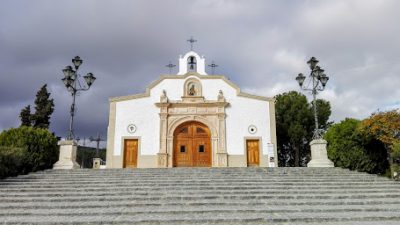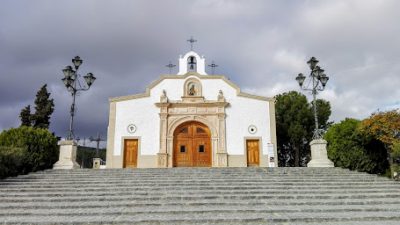Tradition speaks of an ancient Calvary situated near to Tiñosa and of which there are hardly any documentary references. Its existence must pre-date 1593 given that in that year, there was already a calvary located on the same plateau where today’s calvary is situated and which served the same purpose: it was a place of devotion with a cross or image so that pilgrims could pray before entering or leaving the town. It was also used for rogations and devote religious practices. According to the Nazarene’s founding charter, their Good Friday processions reached here. We know that there were two early crosses and that, in the 18th century, others were added that are well documented.
In 1707, construction on the Calvario Hermitage was completed with the alms from the congregation and contributions from the Franciscan Third Order. Since in the 17th century the Via Sacra procession had taken place along the calle de las cruces (also known as ‘el Caminillo), with the Franciscan Third Order repairing the crosses that were destroyed or in poor condition on their way. In 1708, the Town donated the land surrounding the hermitage.
In 1938, the Brotherhood made the necessary arrangements to carry out the works that the hermitage required. This involved renovations in which the interior was preserved just as we see it today, while the rest of the hermitage has undergone many subsequent modifications. The improvement works continued in 1942, and in 1945… At the start of the 1960s, the hermitage was in quite a dilapidated state. Between then and now, the Brotherhood has carried out preservation and extension works.
The image of Nuestra Señora de los Dolores (Our Lady of Sorrows) is worshipped in the hermitage and it is believed that this is the one from 1635 which was donated by Marina de Pareja to the Santo Cristo del Humilladero hermitage. It was moved to the Calvario Hermitage in the 18th century when Santo Cristo del Humilladero closed.
Nothing is known about its authorship, although it is a ‘candelero’ (literally meaning ‘candle holder’) image from the 17th century. It belongs to a collection of clothed images which express the seven sorrows of the Virgin, represented by the flaming heart pierced by seven daggers which are shown in the centre of her chest. Until recently, symbols of passion were shown in her hands, which were removed in the last restoration carried out in 1978.
Address
Address:
Rotonda del Calvario,Priego de Córdoba
GPS:
37.435058303846, -4.1991588790929










